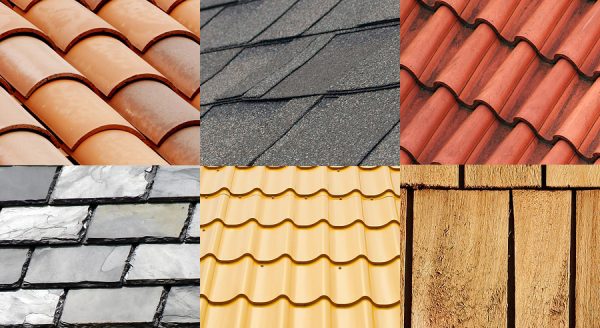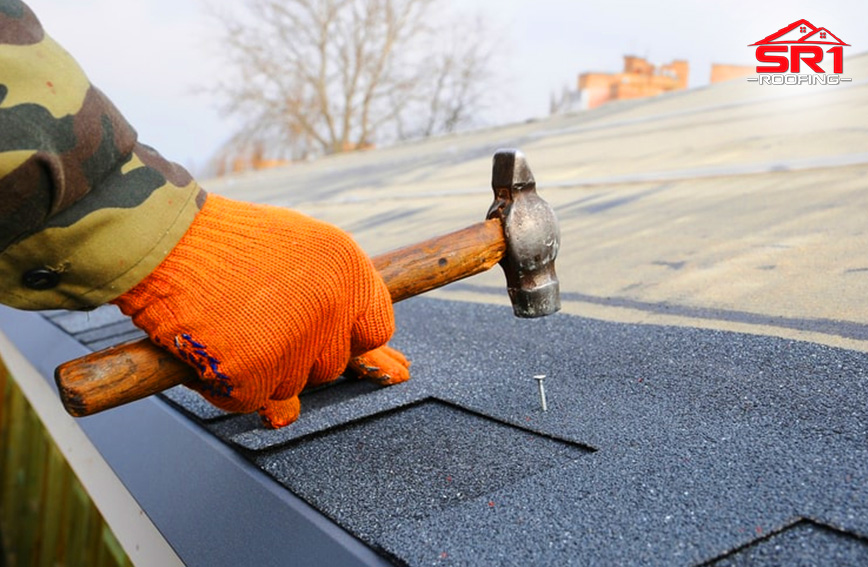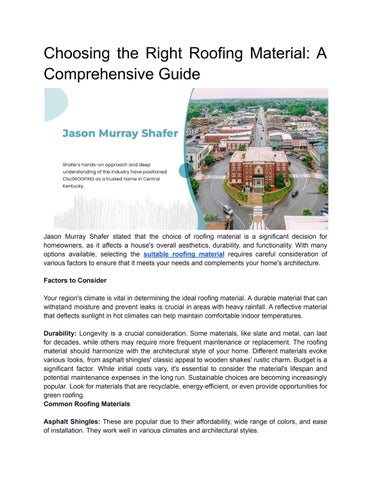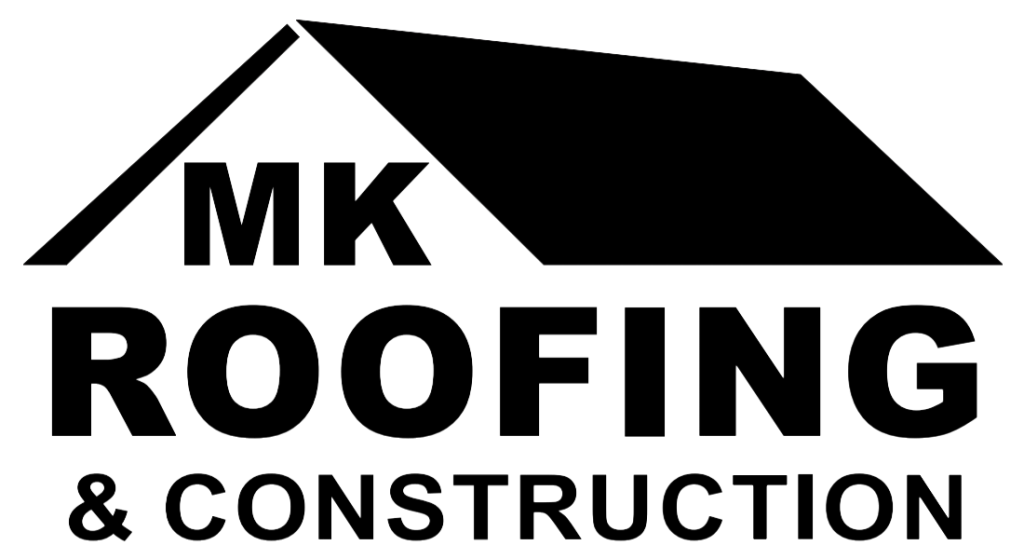In the world of roofing, one of the most crucial decisions you will make is selecting the right material to prevent leaks. Are all roofs susceptible to leaking, even if it’s just a small amount? This article will explore the various roofing materials available and guide you in choosing the best option for your needs. By understanding the characteristics of different materials, you can ensure a durable and long-lasting roof that offers optimal leak prevention. Whether you’re a homeowner planning a roof replacement or a contractor seeking the best solutions for your clients, this article will provide valuable insights to make an informed decision.
Factors to Consider
When it comes to choosing the best roofing material for your home, there are several factors you need to consider. These factors will help you make an informed decision that not only meets your needs but also ensures the longevity and durability of your roof. Some of the key factors to consider include the climate in your area, your budget, the desired aesthetics, and the overall durability of the roofing material.
1. Climate
The climate in your area plays a vital role in determining the most suitable roofing material for your home. Different roofing materials have varying levels of resistance to certain weather conditions, such as hail, heavy rainfall, strong winds, or extreme temperatures. For example, metal roofing is known for its durability and ability to withstand severe weather conditions, making it a popular choice in areas prone to hurricanes. On the other hand, asphalt shingles may not be as resilient in regions with high humidity or frequent temperature fluctuations.
2. Budget
Your budget is another crucial factor to consider when selecting a roofing material. The cost of materials, installation, and maintenance can vary significantly depending on the type of roof you choose. Asphalt shingles are generally the most affordable option, making them a popular choice for many homeowners. However, if your budget allows for it, investing in a more durable and long-lasting material, such as slate or metal roofing, may prove to be a cost-effective decision in the long run, as they require less frequent repairs and replacements.

This image is property of www.garnerroof.com.
3. Durability
The durability of the roofing material is essential in determining its lifespan and overall performance. Some materials, like asphalt shingles, have a relatively shorter lifespan of around 15 to 20 years, while others, like slate or metal roofing, can last for 50 years or more with proper maintenance. It’s important to consider how long you plan to stay in your home and factor in the durability of the material accordingly. Additionally, the resistance of the roofing material to elements like fire, moisture, and pests should also be taken into account.
4. Aesthetics
The appearance of your home is an important consideration, and the roofing material you choose can greatly impact its overall aesthetics. Different materials offer various styles, textures, and colors to suit your desired architectural style and personal taste. Asphalt shingles come in a wide range of colors and styles, making them versatile and suitable for different home designs. On the other hand, materials like concrete tiles, slate, or wood shakes offer a more traditional or rustic look, adding character and charm to your home’s exterior.
Types of Roofing Materials
There are several different types of roofing materials available in the market, each with its own unique set of characteristics, advantages, and disadvantages. Understanding the properties of each material can help you make an informed decision based on your specific requirements and preferences. Here are some of the most commonly used roofing materials:

This image is property of thumbor.forbes.com.
1. Asphalt Shingles
Asphalt shingles are the most common and widely used roofing material due to their affordability and ease of installation. They are made from a combination of asphalt, fiberglass, and mineral granules, offering adequate protection against harsh weather conditions. Asphalt shingles come in a variety of colors and styles, allowing homeowners to customize the look of their roof. However, they may not be as durable as other materials and may require regular maintenance and occasional repairs.
2. Metal Roofing
Metal roofing is becoming increasingly popular due to its durability, energy efficiency, and aesthetic appeal. It is available in various materials, including steel, aluminum, zinc, or copper, each offering its own unique set of advantages. Metal roofs are highly resistant to fire, pests, and extreme weather conditions such as hail and high winds. They also have a long lifespan, with some metal roofs lasting for 50 years or more. However, metal roofing can be more expensive upfront compared to other materials.

This image is property of empire-s3-production.bobvila.com.
3. Clay or Concrete Tiles
Clay or concrete tiles are known for their timeless beauty and durability. They are available in various shapes, sizes, and colors, providing a classic and elegant look to any home. These tiles are resistant to fire, pests, and rot, making them an excellent choice for homeowners seeking a long-lasting roofing solution. However, they are considerably heavier than other materials and may require additional structural support during installation. Clay or concrete tiles can also be more expensive than other options.
4. Slate
Slate is a natural stone roofing material that offers unmatched beauty, elegance, and longevity. It is resistant to fire, insects, and extreme weather conditions, making it a highly durable option. Slate roofs can last for a century or more when properly maintained. Its unique texture and natural color variations add a touch of sophistication to any home. However, slate roofing is one of the most expensive options available and requires professional installation due to its weight and fragility.

This image is property of sr1roofing.com.
5. Wood Shakes
Wood shakes provide a warm and rustic look, making them a popular choice for homeowners seeking a natural and eco-friendly roofing material. They are typically made from cedar, redwood, or pine and offer excellent insulation and energy efficiency. Wood shakes have a natural resistance to UV rays and can withstand harsh weather conditions when properly maintained. However, they require regular inspection and treatment to prevent rot, insects, and moss growth.
6. Rubber Roofs
Rubber roofs, also known as EPDM (ethylene propylene diene terpolymer) roofing, are primarily used in commercial or flat roof applications. They are highly durable, energy-efficient, and resistant to UV radiation and ozone. Rubber roofs are lightweight, making them easier to install and repair. However, they may not be as visually appealing as other materials and require maintenance to prevent damage from foot traffic or sharp objects.

This image is property of image.isu.pub.
7. Green Roofs
Green roofs, also known as living roofs, have gained popularity in recent years due to their environmental benefits and aesthetic appeal. They are covered with vegetation, offering insulation, stormwater management, and improved air quality. Green roofs can help reduce energy consumption, mitigate the urban heat island effect, and provide habitats for wildlife. However, they require specialized installation and regular maintenance to ensure the health and longevity of the vegetation.
8. Built-Up Roofing
Built-up roofing (BUR) is a traditional and cost-effective roofing system commonly used in commercial buildings. It consists of multiple layers of asphalt or coal tar alternated with reinforcing fabrics, such as fiberglass or organic mats. BUR roofs offer excellent durability and resistance to fire and UV radiation. However, they require professional installation and can be heavier compared to other roofing systems.
9. Single-Ply Membrane
Single-ply membrane roofing systems are lightweight, flexible, and easy to install. They are commonly made from synthetic materials such as TPO (thermoplastic olefin), PVC (polyvinyl chloride), or EPDM. Single-ply membranes provide excellent resistance to UV radiation, chemicals, and temperature extremes. They are also highly durable and require minimal maintenance. However, they may be more susceptible to punctures and can be prone to shrinkage over time.
In conclusion, choosing the right roofing material for your home involves considering multiple factors such as climate, budget, durability, and aesthetics. By carefully evaluating your priorities and understanding the properties of different roofing materials, you can make an informed decision that ensures the longevity, efficiency, and overall appeal of your roof. Remember to consult with roofing professionals to determine the most suitable option based on your specific needs and local building codes.


